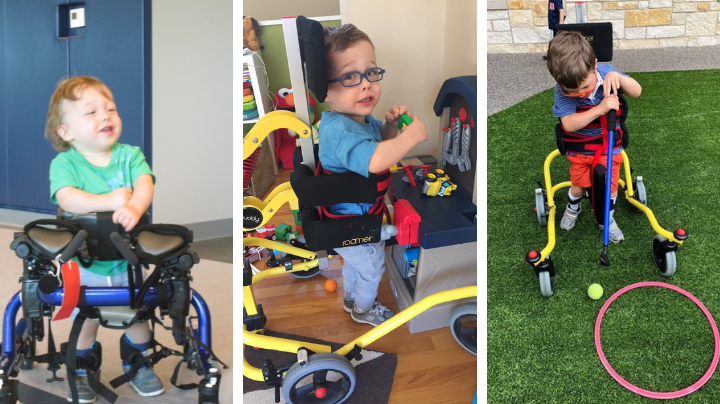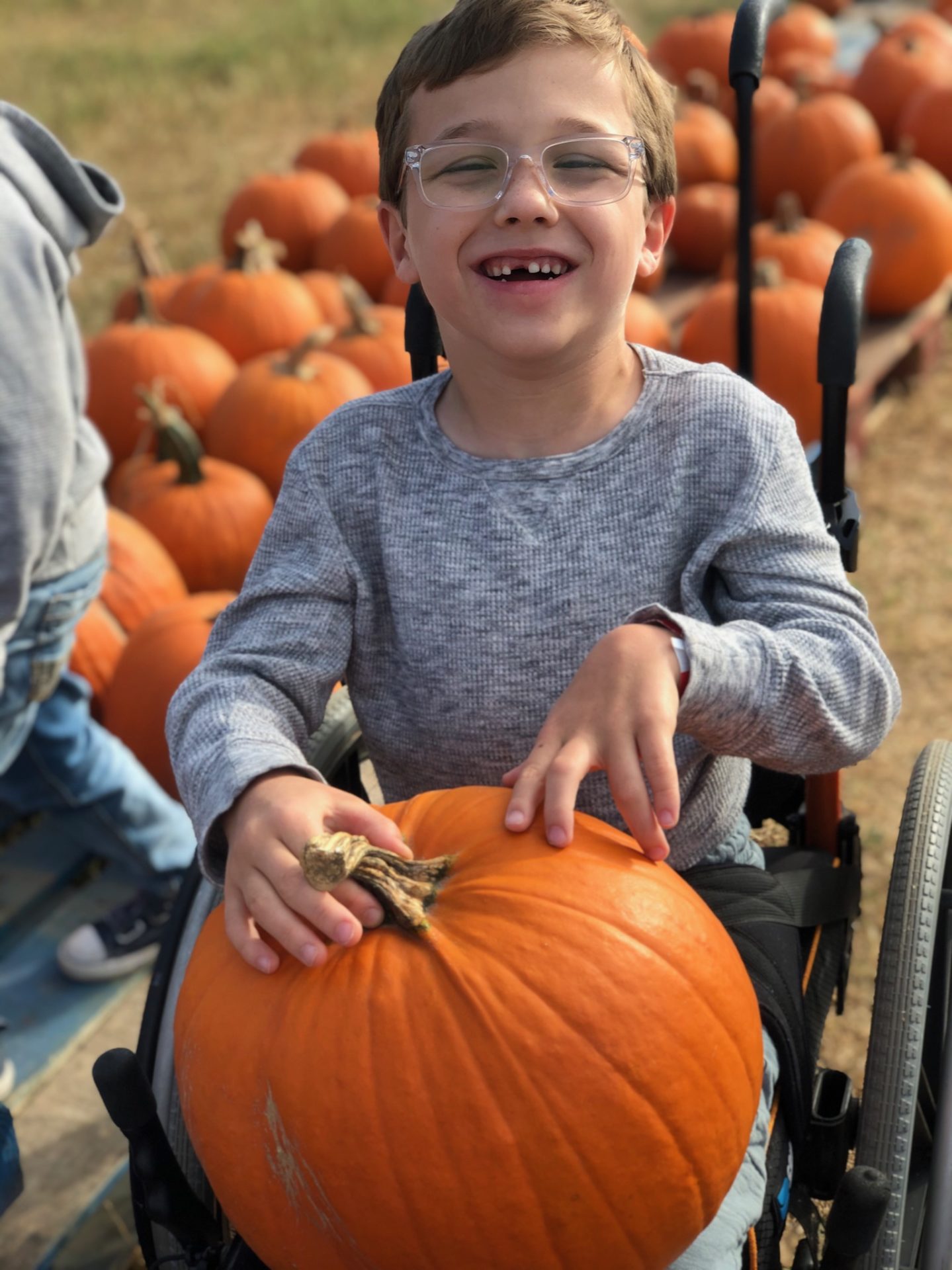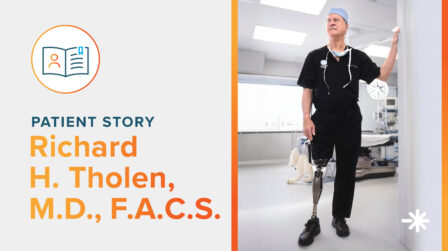Cater Joseph, Jr.: 8-Year-Old Cerebral Palsy Warrior Shows the World We Are More Alike Than We Are Different

March is Cerebral Palsy Awareness Month. Here’s the story of the Joseph family whose journey started with the premature delivery of their son, Cater, Jr. After 67 days of ups and downs in the NICU, they got to bring their baby boy home, and at just seven months old, he was diagnosed with cerebral palsy. Since then, their precious boy has been through hundreds of hours of therapy, multiple surgeries and hospital stays, and countless doctor visits. And, through it all, Cater, Jr. has the best attitude and a smile that will melt anyone’s heart.
When Wesley and Mark Cater Joseph, Sr. (Cater, Sr.) found out they were pregnant with their first baby boy, they were over the moon. They couldn’t wait to welcome their little one into the world.
Due in May 2013, Wesley had plenty of time to prepare. She started setting up the nursery, buying clothes and supplies, and even planned baby showers with her friends. As she progressed into her third trimester, everything seemed to be going as planned. That is until she started to feel signs of preterm labor. After trying everything she could to continue with her pregnancy, it was clear her body had other plans.
Born 11 weeks early, Mark Cater Joseph, Jr. (named after his dad) came into the world on March 2, 2013, weighing in at just 3 lbs. Even though he was tiny, it was clear from the very beginning that he was mighty. He was absolutely perfect – a bouncing baby boy whose blue eyes sparkled from the moment they opened for the first time.
Wesley and Cater, Sr. spent an agonizing 67 days in the neonatal intensive care unit (NICU) with Cater, Jr., as he gained enough strength to eat and breathe on his own. During his time in the NICU, Cater, Jr. also underwent several tests, including MRI imaging, which is how doctors discovered damage to the white matter in his brain, known as Cystic Periventricular Leukomalacia or Cystic PVL.
“They said he could spend his life without walking or talking, or it could be nothing,” Wesley says. “They told us to just take him home and love him.”
Home at Last
When the Josephs finally brought baby Cater home from the hospital, they were initially relieved.
“For the first couple of months, he was like any newborn,” Wesley recalls. “He was interacting with us, smiling, and babbling.”
At the seven-month mark, though, they noticed he was missing typical milestones, such as pushing himself up on his arms and sitting up.
“There was definitely something going on,” notes Wesley. “My radar was on, for sure.”

They made an appointment with a neurologist who confirmed their fears: Cater, Jr. had cerebral palsy.
Due to his premature birth, Cater, Jr. was at higher risk of developing cerebral palsy, which impacts 1 in 345 children in the United States. In fact, nearly half of children who develop cerebral palsy are born prematurely.
Early Intervention Is Key
The doctor sent Wesley and Cater, Sr. home with a list of physical therapists, and they began to wrap their heads around the news they had just received.
The first step for Wesley was to get on the phone with their health insurance company, so they could begin baby Cater, Jr.’s therapy right away.
That same week, they started physical therapy. And, as the months rolled by, Cater, Jr. was showing improvement. When it was time to advance to walking, Cater, Jr.’s physical therapist recommended they get a referral to Hanger Clinic from their physician for leg bracing to help support him as he learned this new skill.

Cater, Jr.’s Orthotic Journey at Hanger Clinic
Wesley and Cater, Sr. initially brought baby Cater to Hanger Clinic in Austin and then transferred down to the Houston location where pediatric orthotist Tom DiBello, CO, LO, FAAOP, assisted the family.
By this time, Cater, Jr. was ready for ankle-foot orthoses (AFOs), which are commonly used to treat a range of walking disorders caused by a variety of neurological and musculoskeletal conditions, including cerebral palsy. AFOs align the joints of the foot and ankle and provide support for the wearer.
“Cater got his first set of AFOs at one year old, starting his whole orthotics journey,” says Wesley.
AFOs are important for kids with cerebral palsy because they allow them to get into pediatric standers. Standers, also called standing frames, are designed to help children with physical limitations stand on their own. With the aid of a stander, children who are struggling to walk can build strength and coordination.
“Our doctor stressed the importance of getting Cater into a stander twice a day,” says Wesley.
Often, kids with cerebral palsy struggle with hip complications. Since Cater, Jr.’s family was so diligent about using his AFOs and getting him in the stander at least two hours each day, he hasn’t had any problems.
“Cater gets hip x-rays every six months to make sure everything is OK, but so far he has had no hip concerns,” explains his mom. “Using his AFOs while he’s in the stander has really helped out.”
Now at 8 years old, Cater has two hours of physical therapy and one hour of occupational therapy each week to ensure he’s building on his early progress. Physical therapy helps him strengthen major muscle groups while occupational therapy helps him refine his fine motor skills, which are important when it comes to eating with a utensil or writing with a pencil.
Ongoing Support from Hanger Clinic Experts
The Joseph family returned to the Austin Hanger Clinic location where they now see Cater, Jr.’s current clinician Natalia Mejia Martinez, CPO, LPO. Natalia monitors Cater’s progress and growth closely to ensure his AFOs are fitting correctly, so he can be as mobile as possible.
“She makes sure he has what he needs,” says Wesley.
The family returns to Hanger Clinic often for adjustments or to see if there is anything new that would help Cater.
“We usually get new AFOs once a year in the summer, and then he gets new shoes before school starts again,” explains Wesley.
This team approach to care has helped Cater thrive.

Preparing for a Successful School Experience
Like many other children born with cerebral palsy, Cater, Jr.’s cognitive ability has not been impacted by his condition.
He began his schooling at The Rise School of Austin, which provides high-quality early childhood education to children of all abilities in an inclusive setting. He thrived there, met new friends, and benefitted from additional therapy.
In August 2019, when it was time for him to start kindergarten, Wesley and Cater, Sr. took extra steps to ensure a smooth transition.

Since he was going to be starting at his neighborhood elementary school where many of the students had not yet encountered someone with physical differences, they decided to send his classmates a letter from Cater, Jr. in which he introduces himself, explains what cerebral palsy is, and invites his classmates to ask him any questions they may have about his special equipment. He also provides a list of his favorite things so the other kids can find common ground with him and easily strike up a conversation.
“We’re so thankful for the school environment,” says Wesley. “We feel so welcomed and supported by the staff, the administration, and the other families.”
The Facts About Cerebral Palsy
Since March is Cerebral Palsy Awareness Month, here are a few facts Wesley wants you to know:
- Cerebral palsy (CP) doesn’t necessarily mean learning disabilities. People with CP often have an equal or better IQ than everyone else. Cater, Jr. is smart as a whip and is on level with his peers academically.
- Kids with CP are still kids. Nothing more, nothing less. Cater, Jr. has typical interests for kids his age, like fast cars, construction (and deconstruction!), LEGOs, and more.
- About half of kids with CP are born prematurely. Cater, Jr. was born at 29 weeks and spent 67 days in the NICU.
- Although there is no cure for CP yet, nobody is giving up! Cater, Jr. has participated in stem cell trials to further research for a cure.
- One child every hour is diagnosed with CP.
- Most people with CP don’t want sympathy, they want opportunities.
- CP doesn’t mean never walking. Many can, many will. Cater is working so hard to achieve this and has come so far with the help of therapy, special equipment, and AFOs.
- CP is the most common childhood disability. Do you know any other kids (or adults) with CP? Chances are you do!
“I hope that by sharing and spreading awareness, we can promote acceptance and encourage people to just say hi,” said Wesley.
Request a Free Evaluation
If your child has been diagnosed with cerebral palsy and you are curious about the orthotic journey, schedule a free evaluation with one of our board-certified orthotists.
Latest Updates
Subscribe to stay up-to-date on our latest posts.


